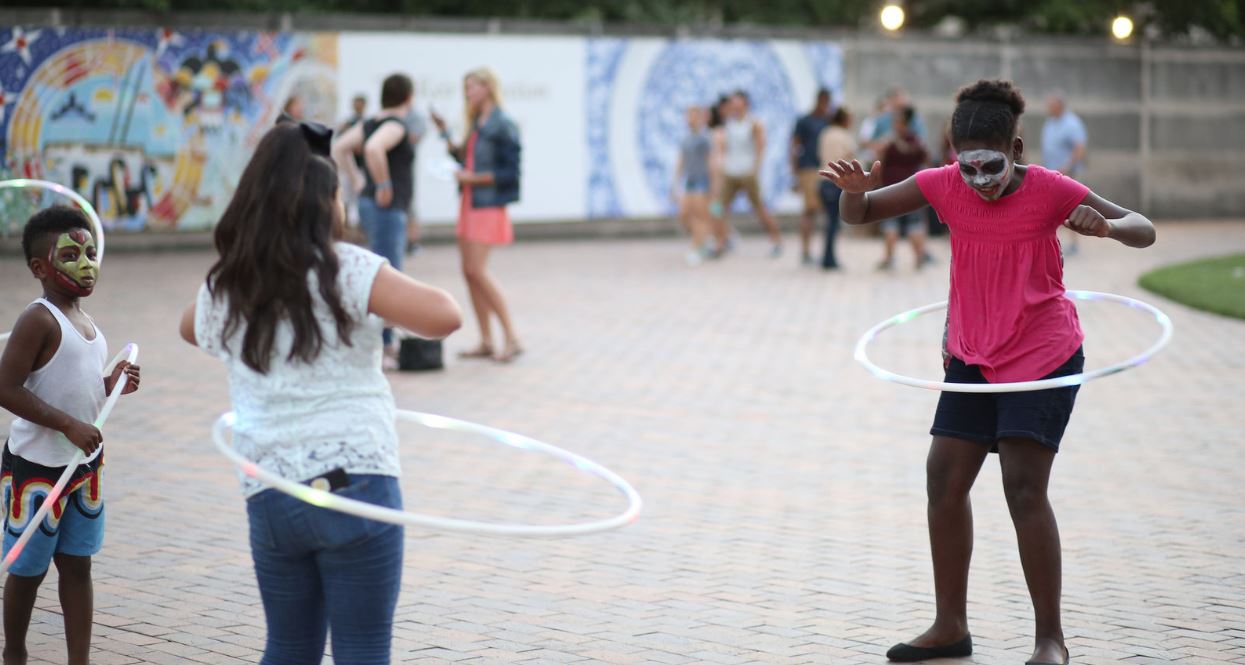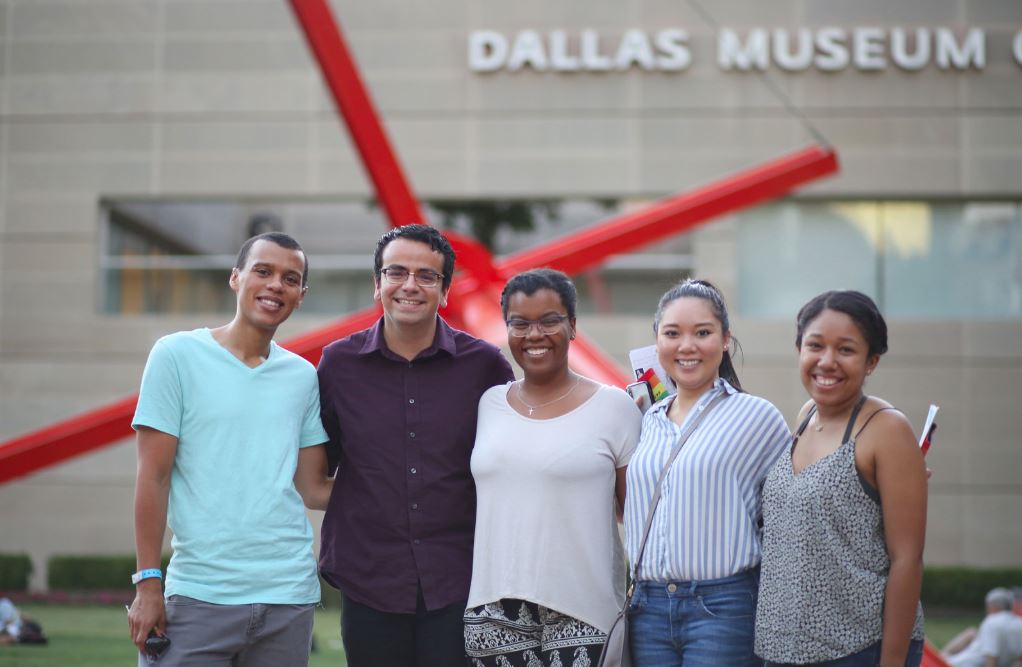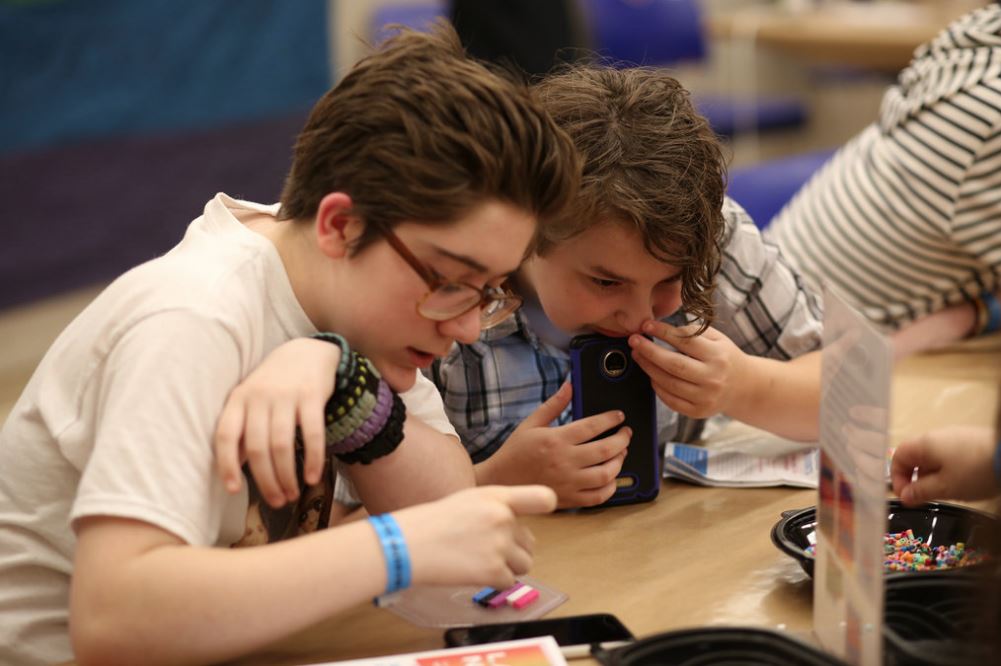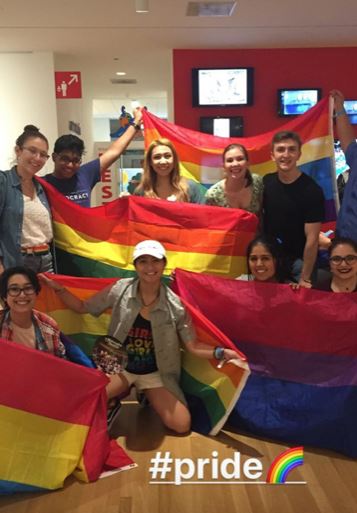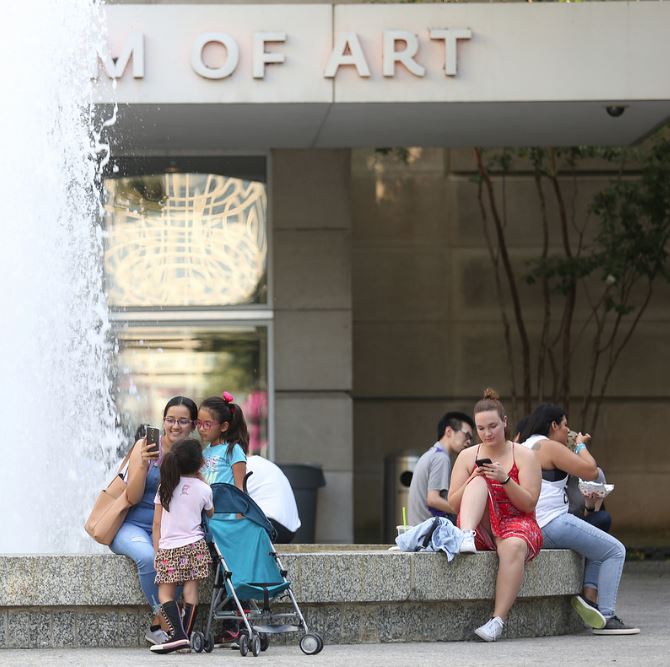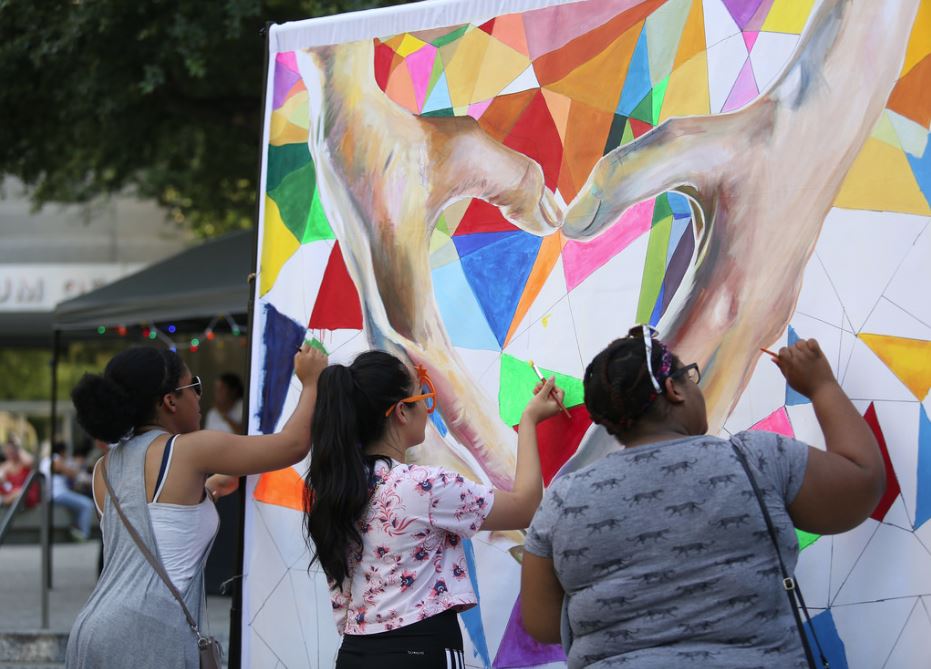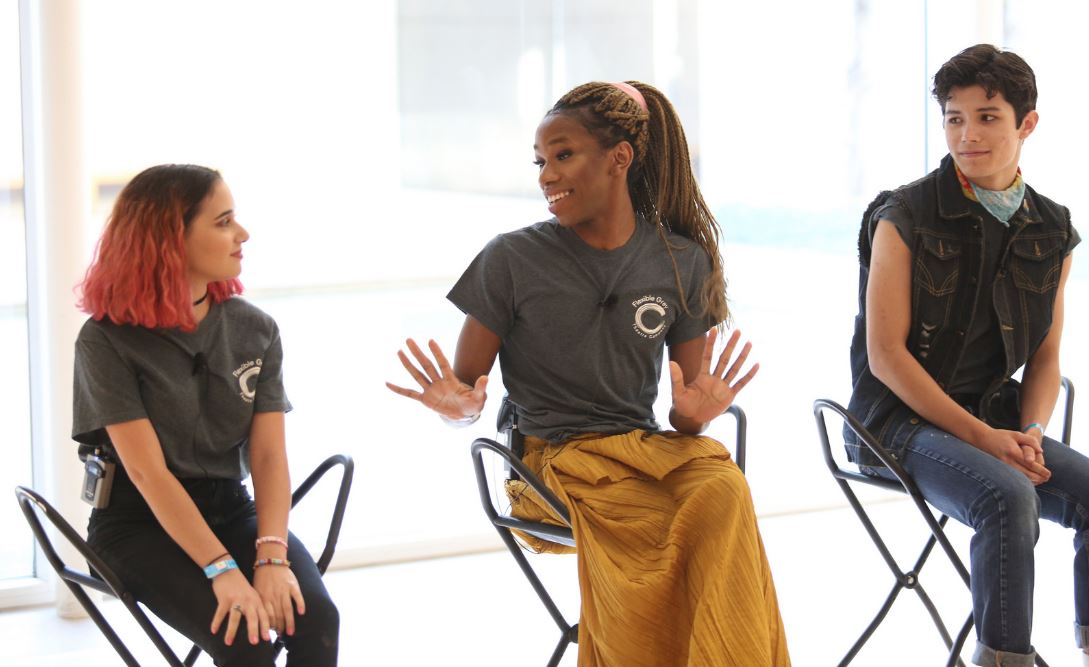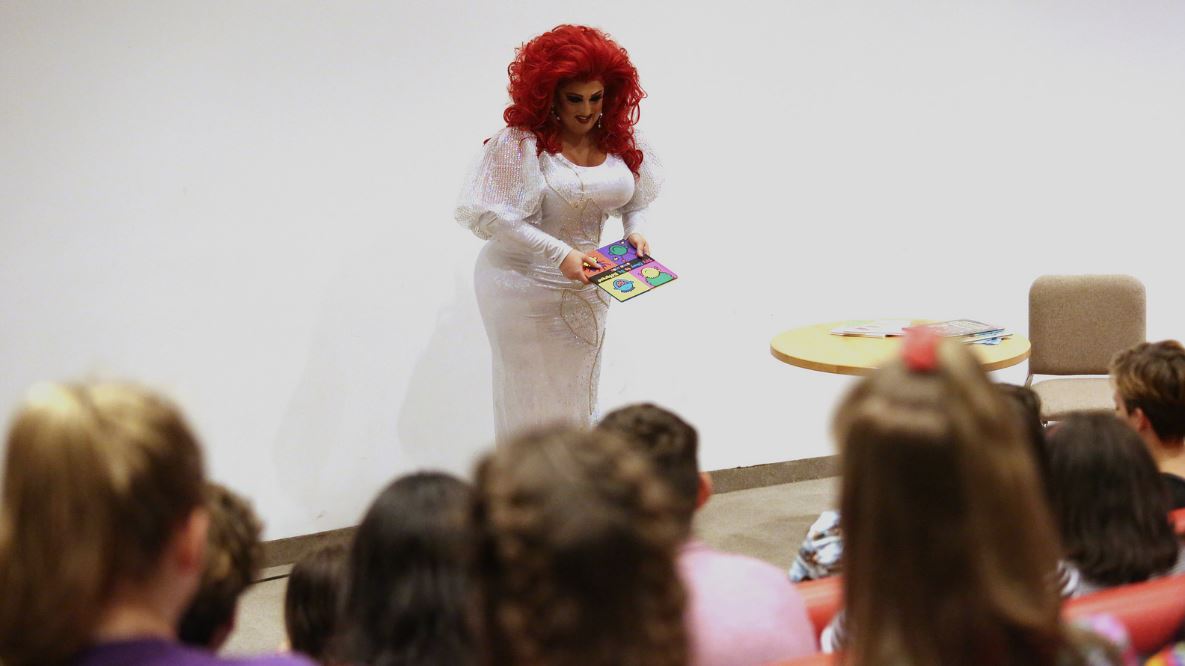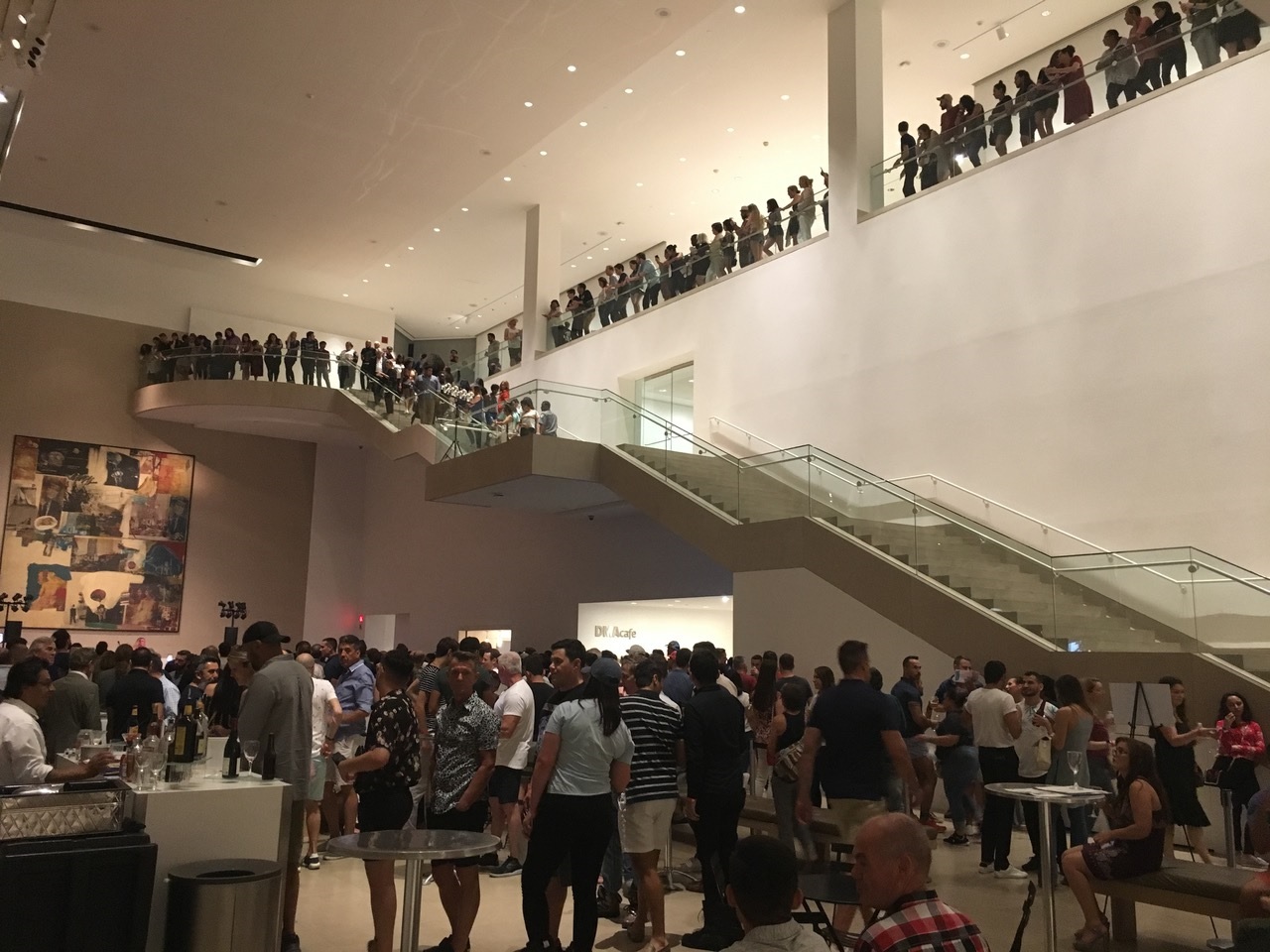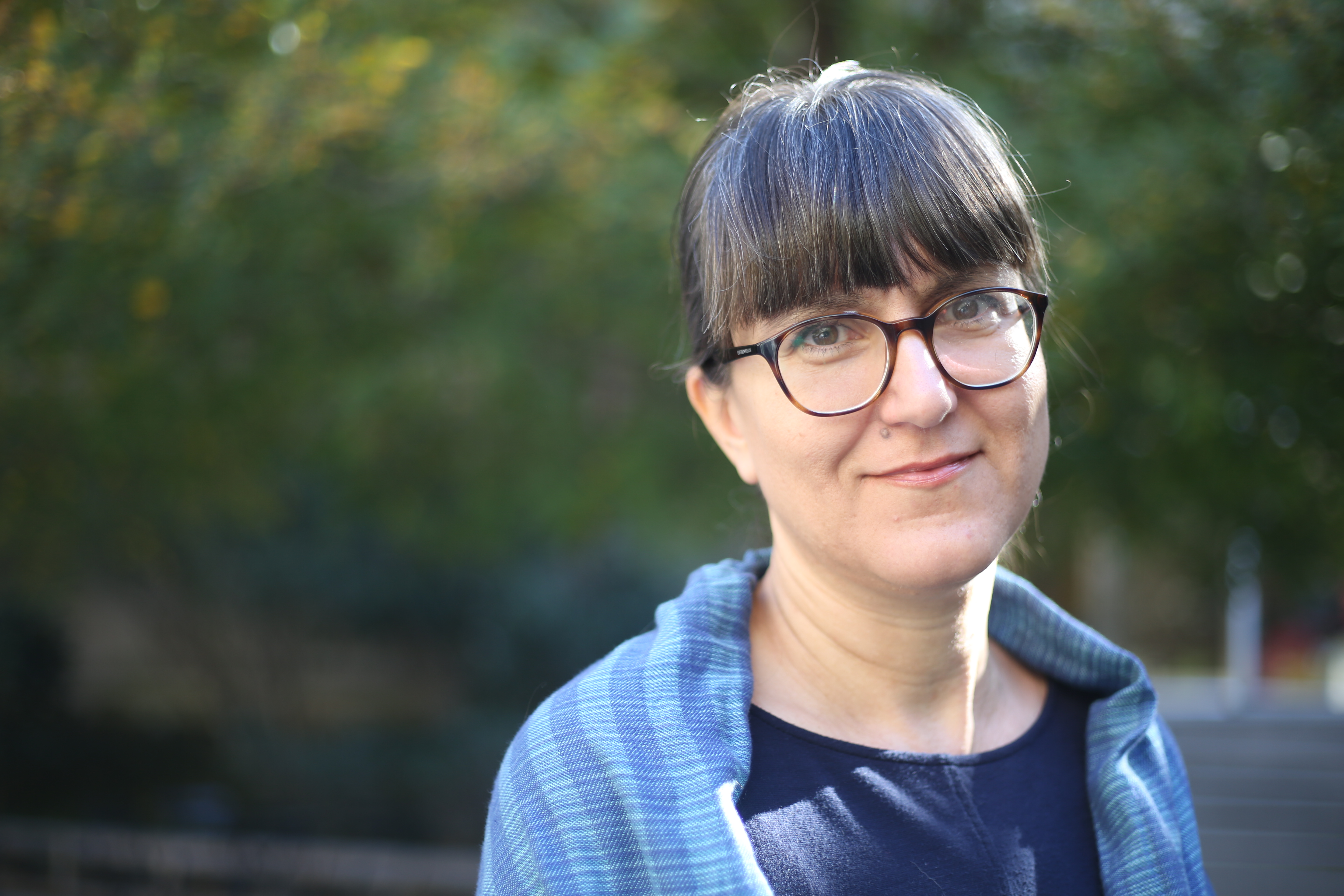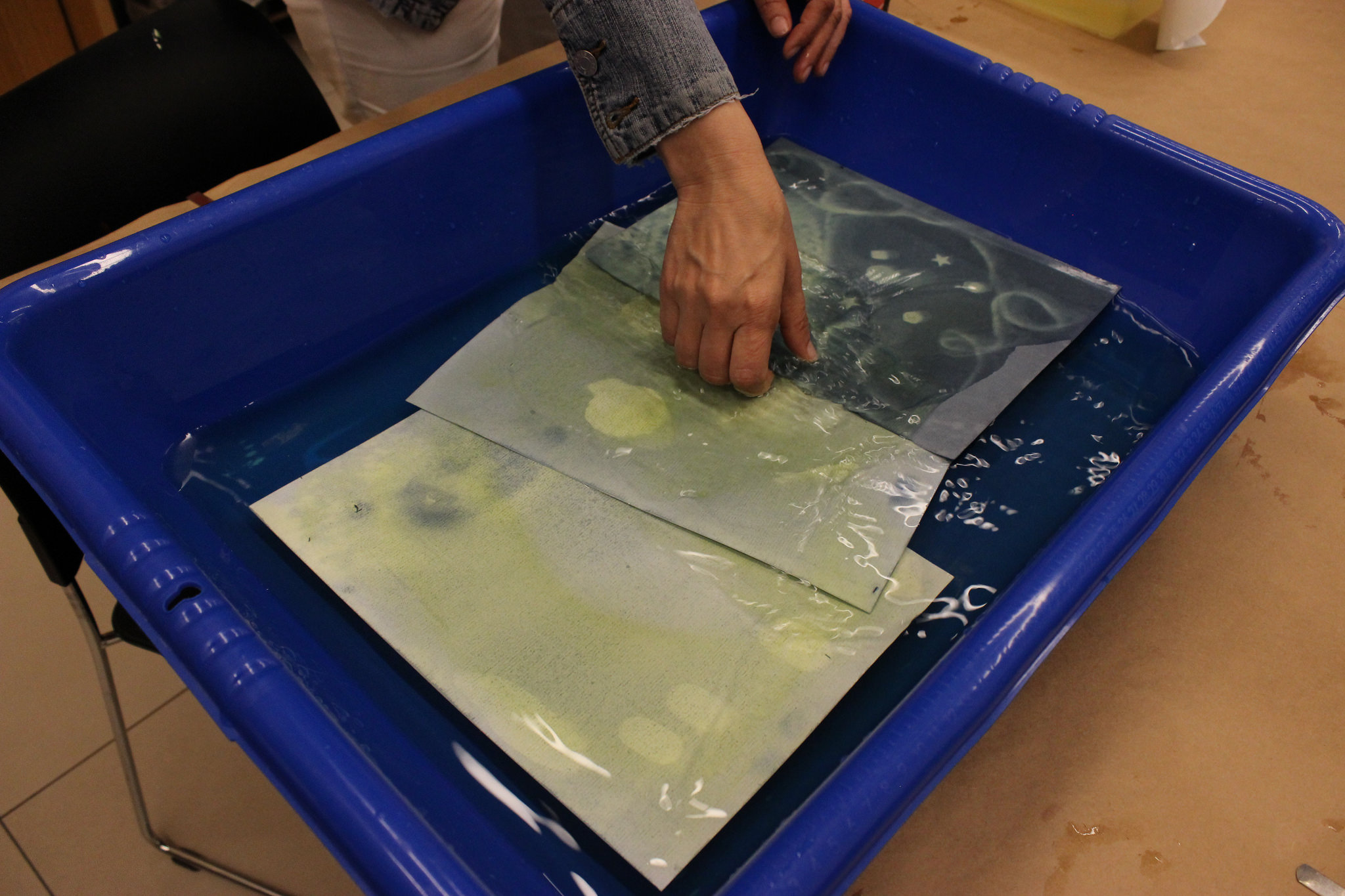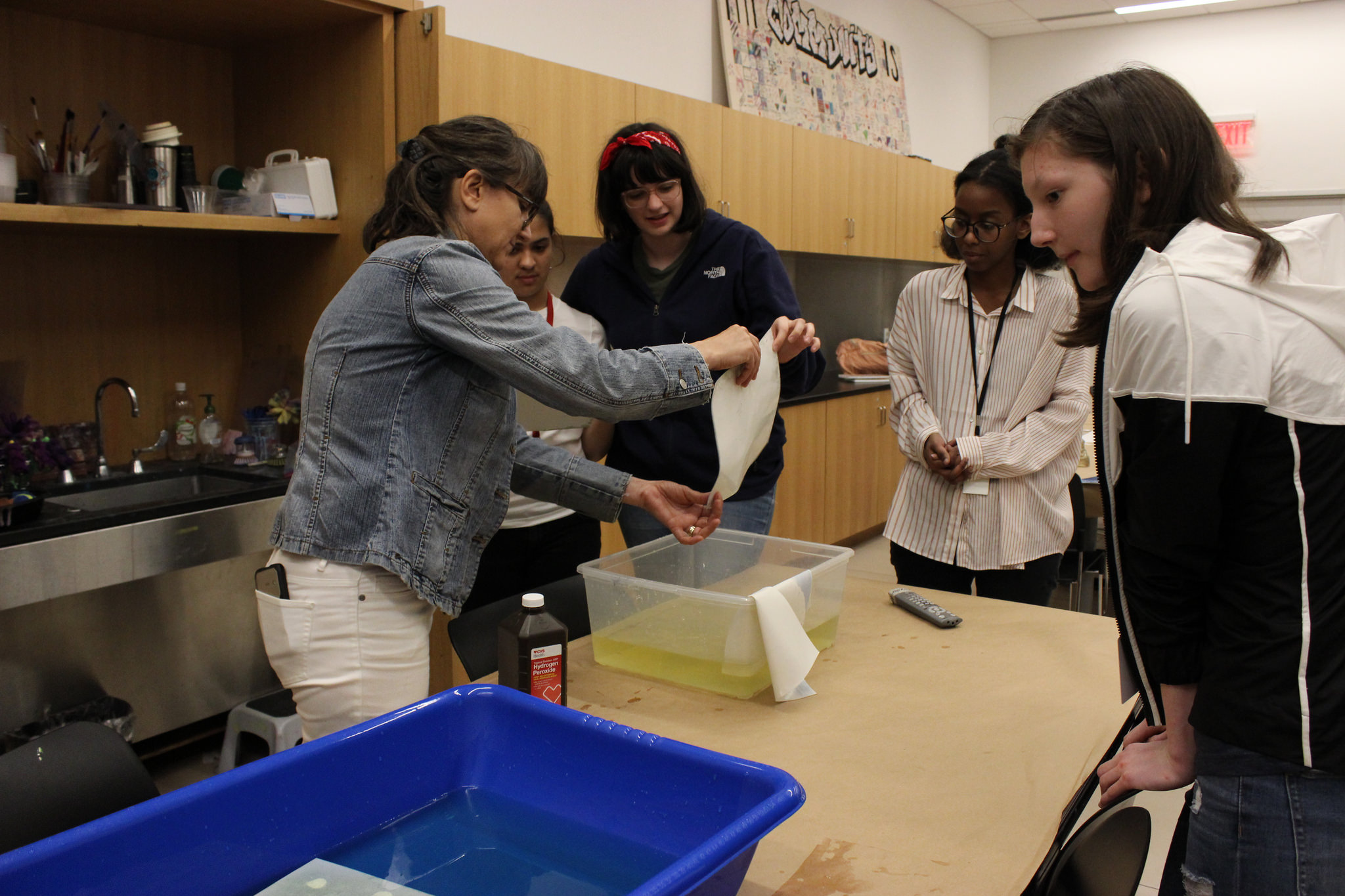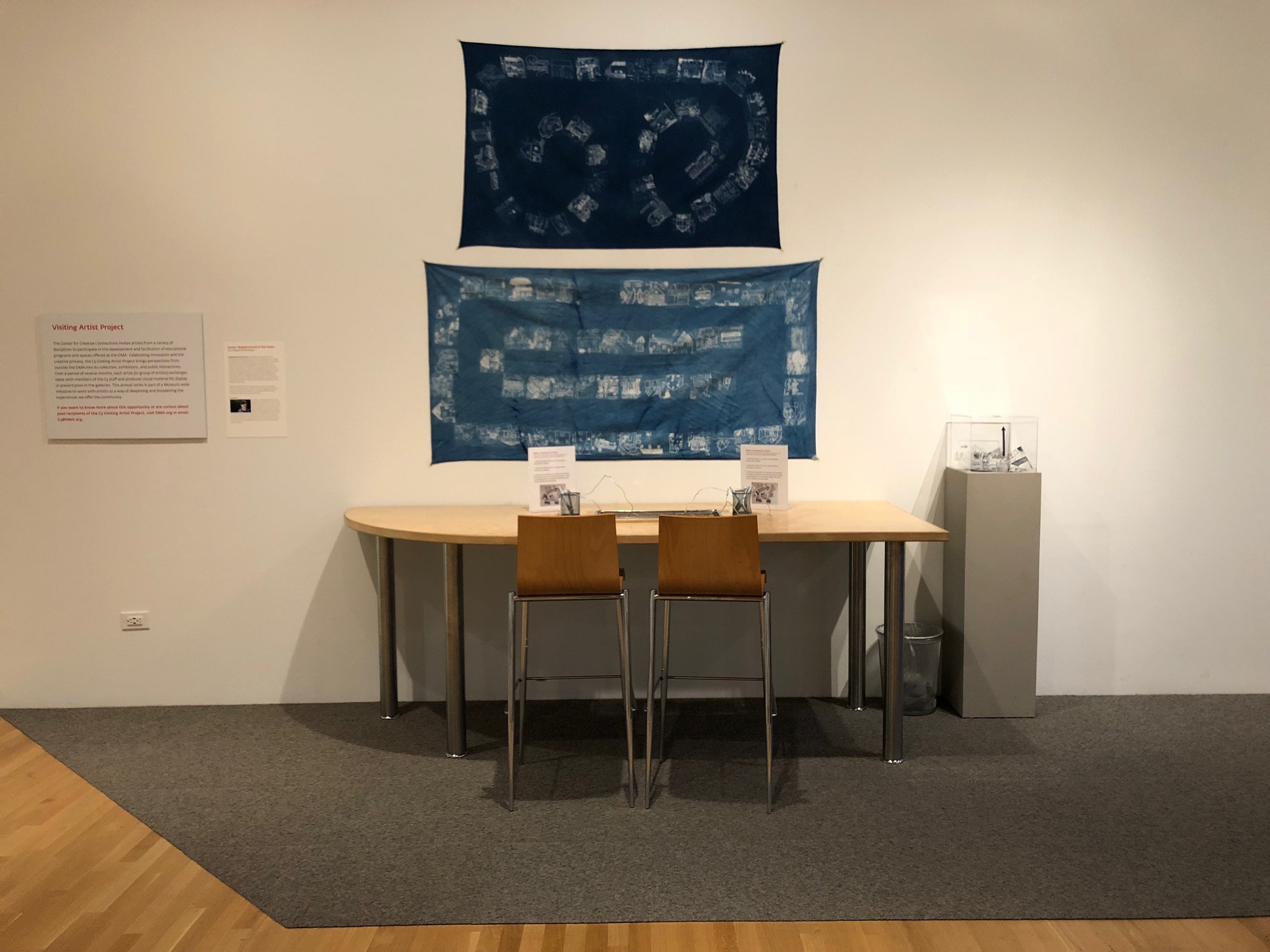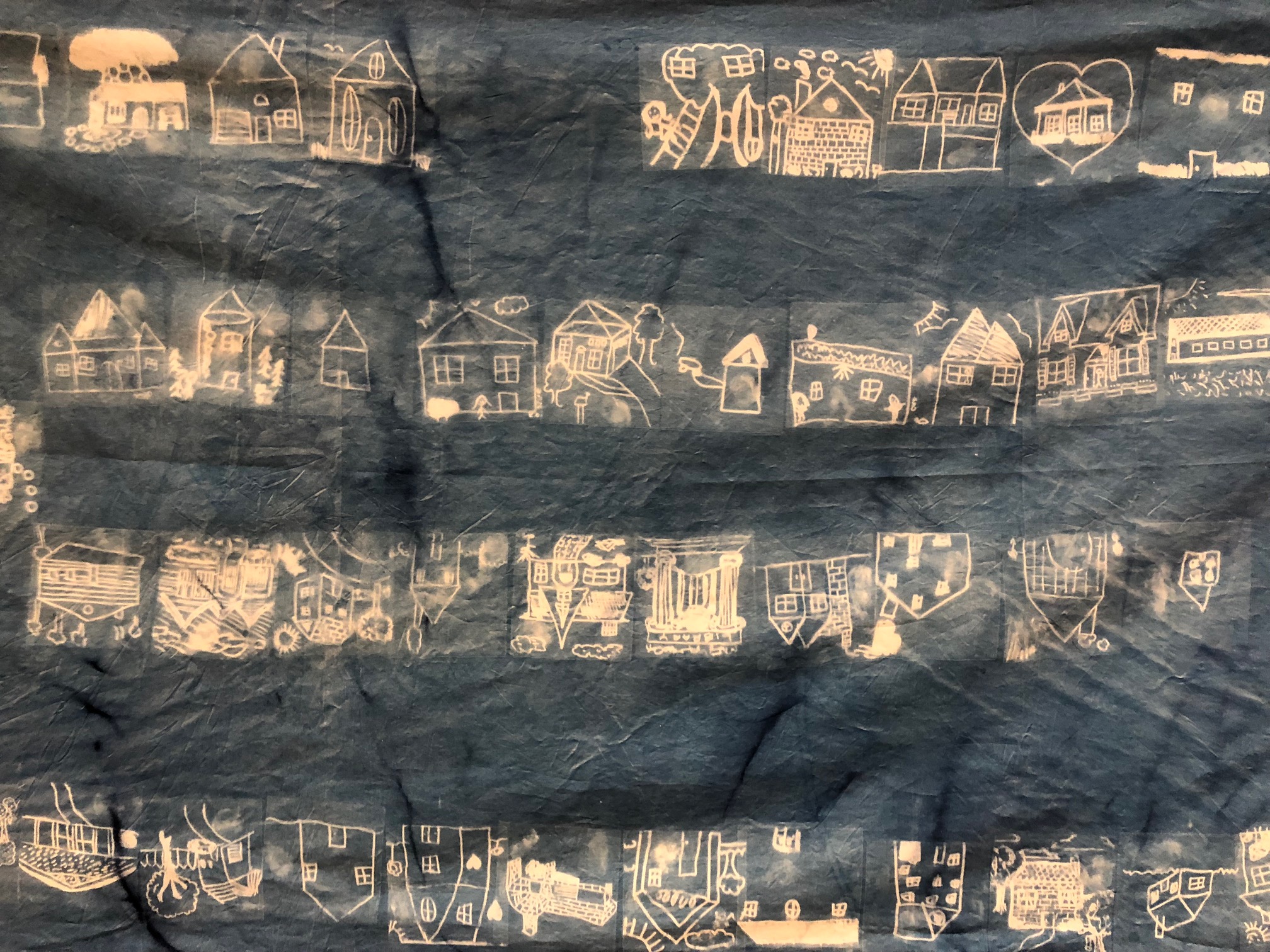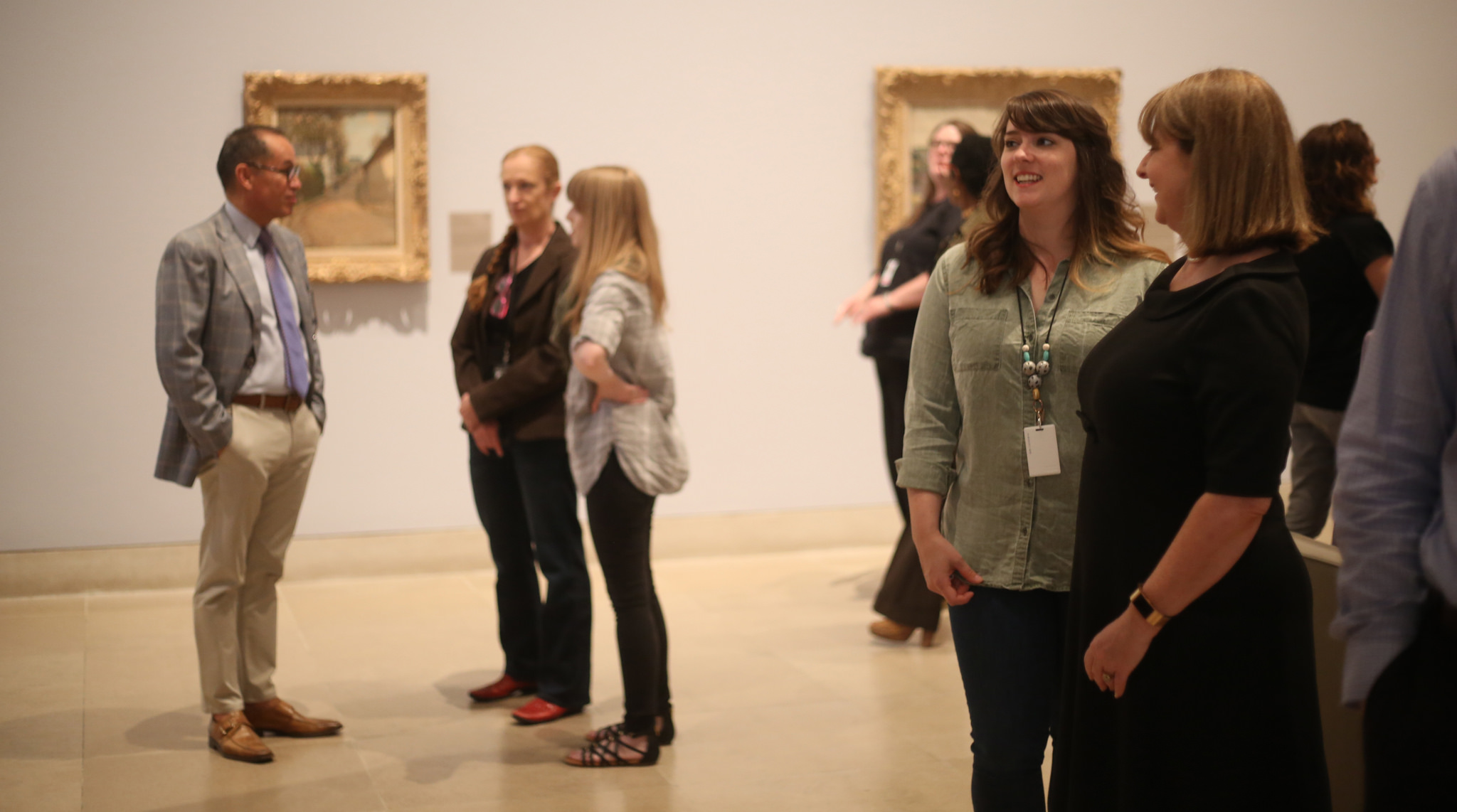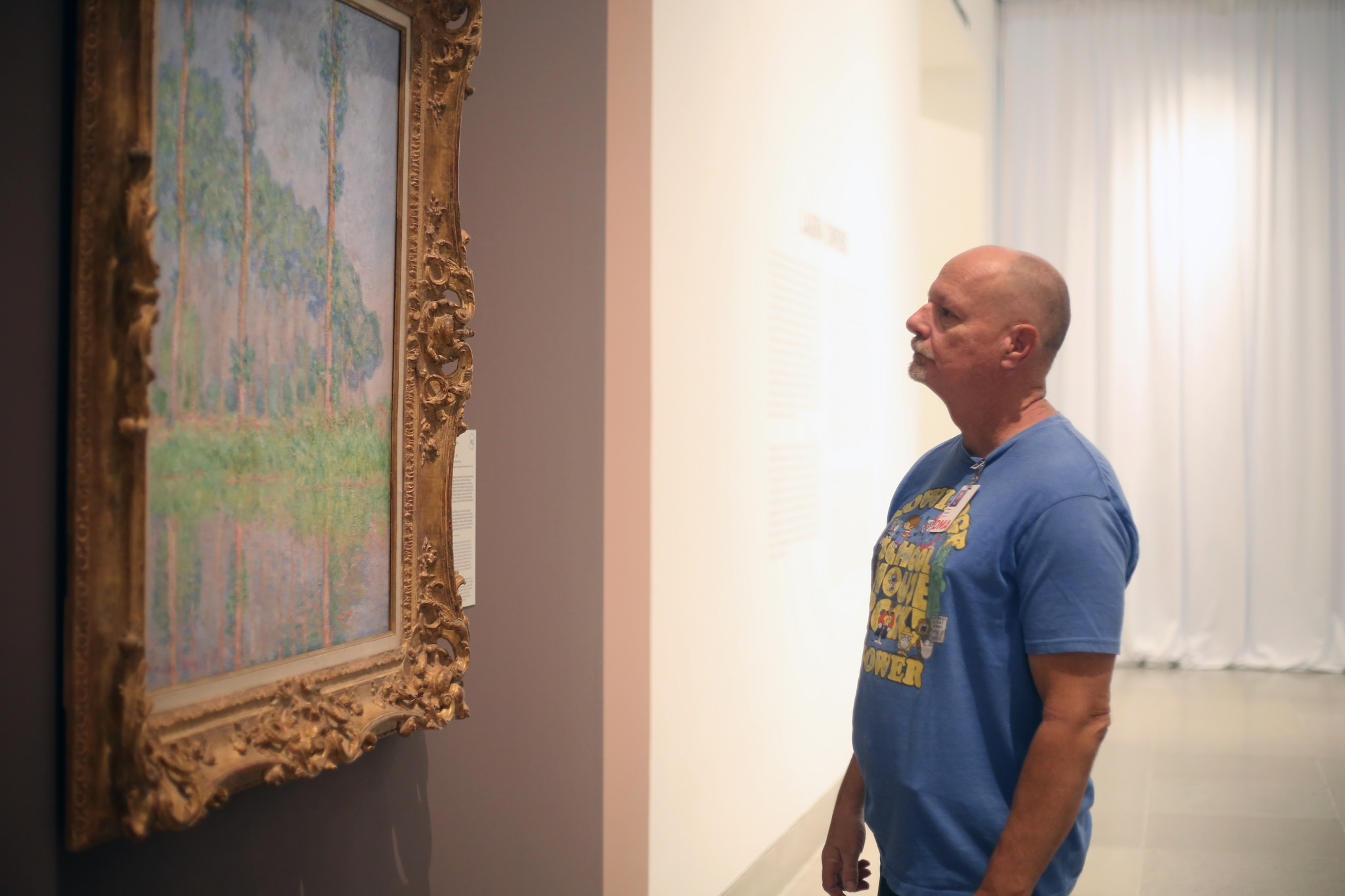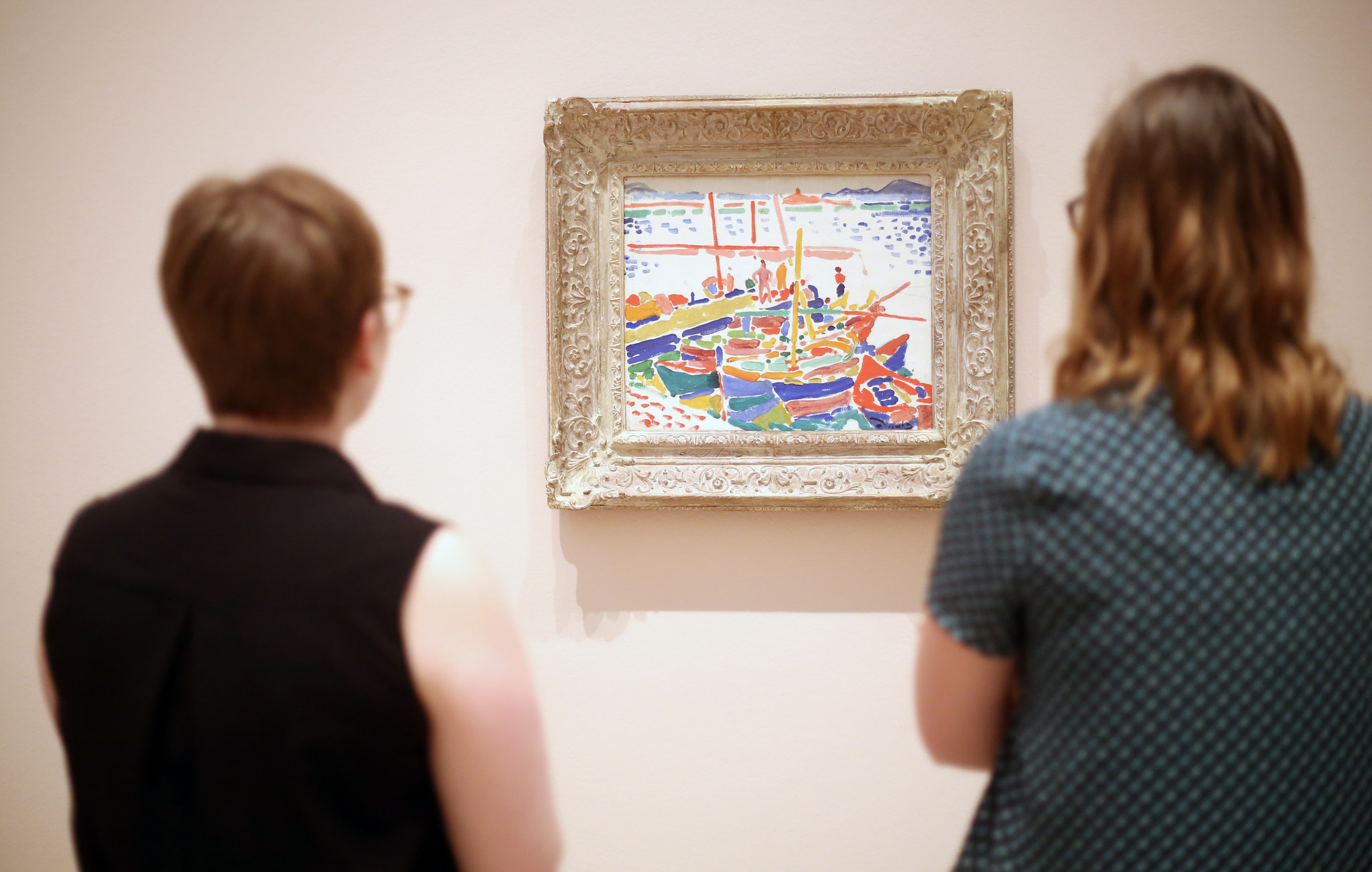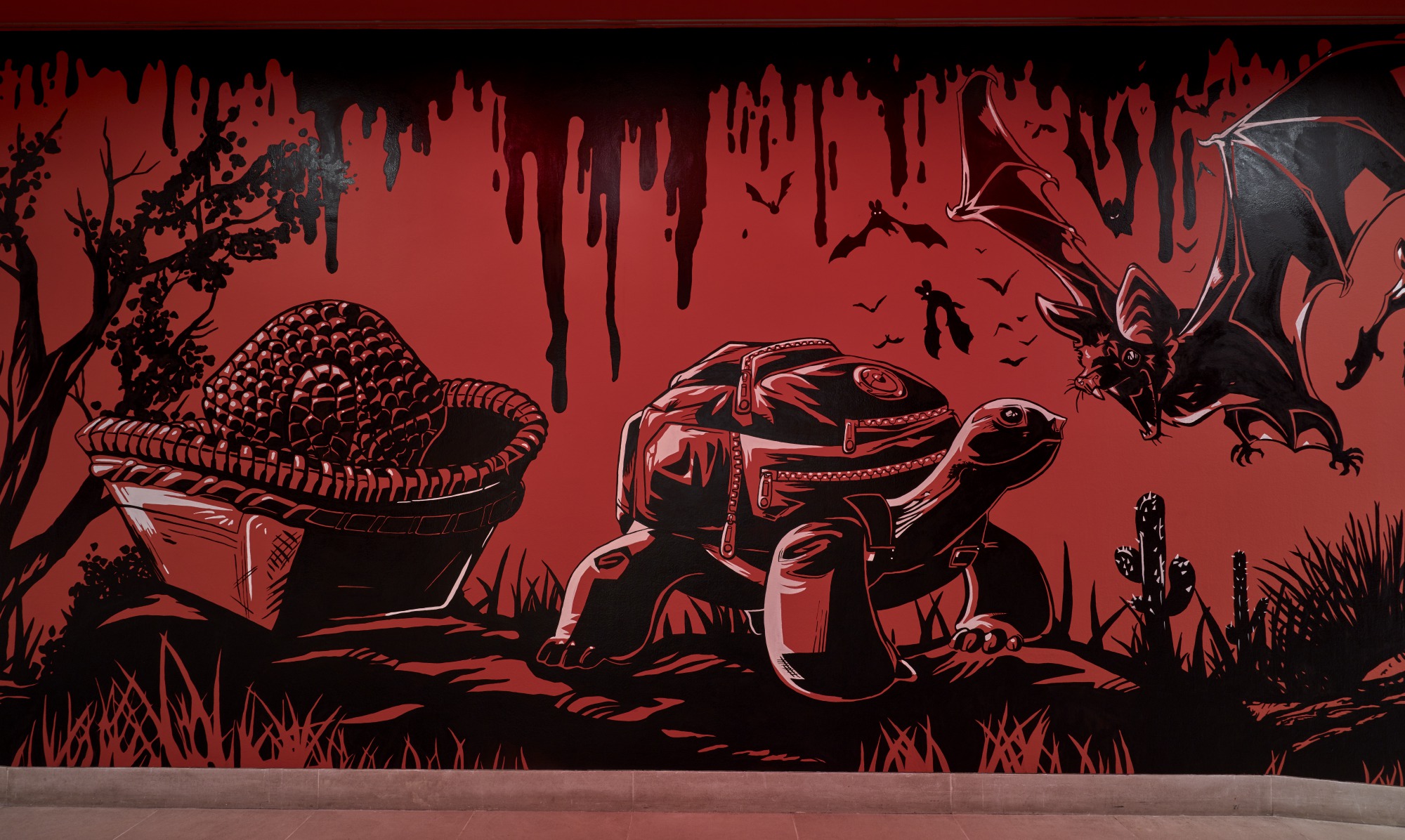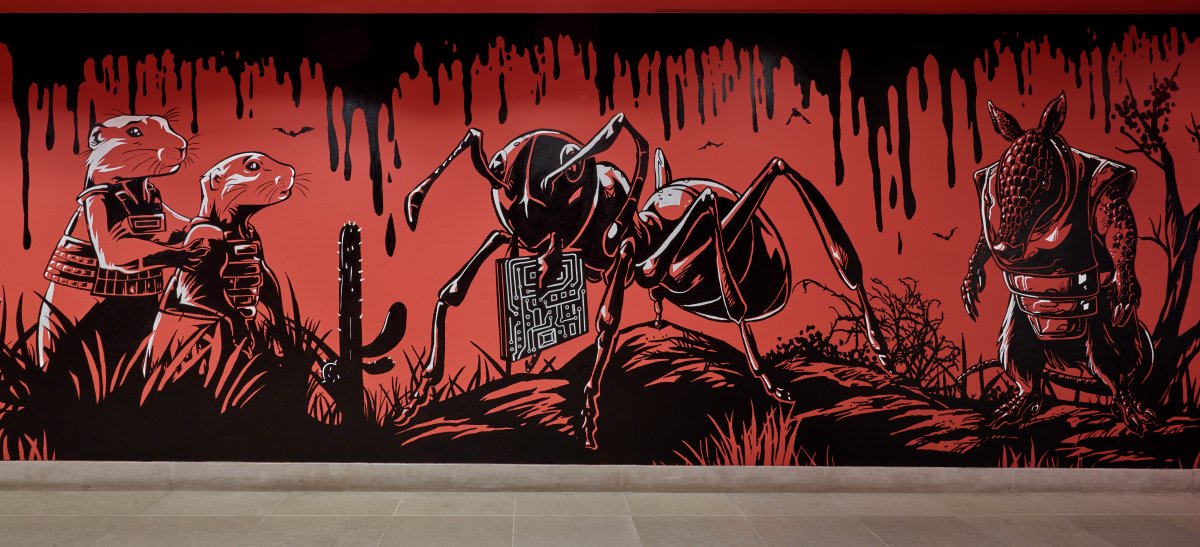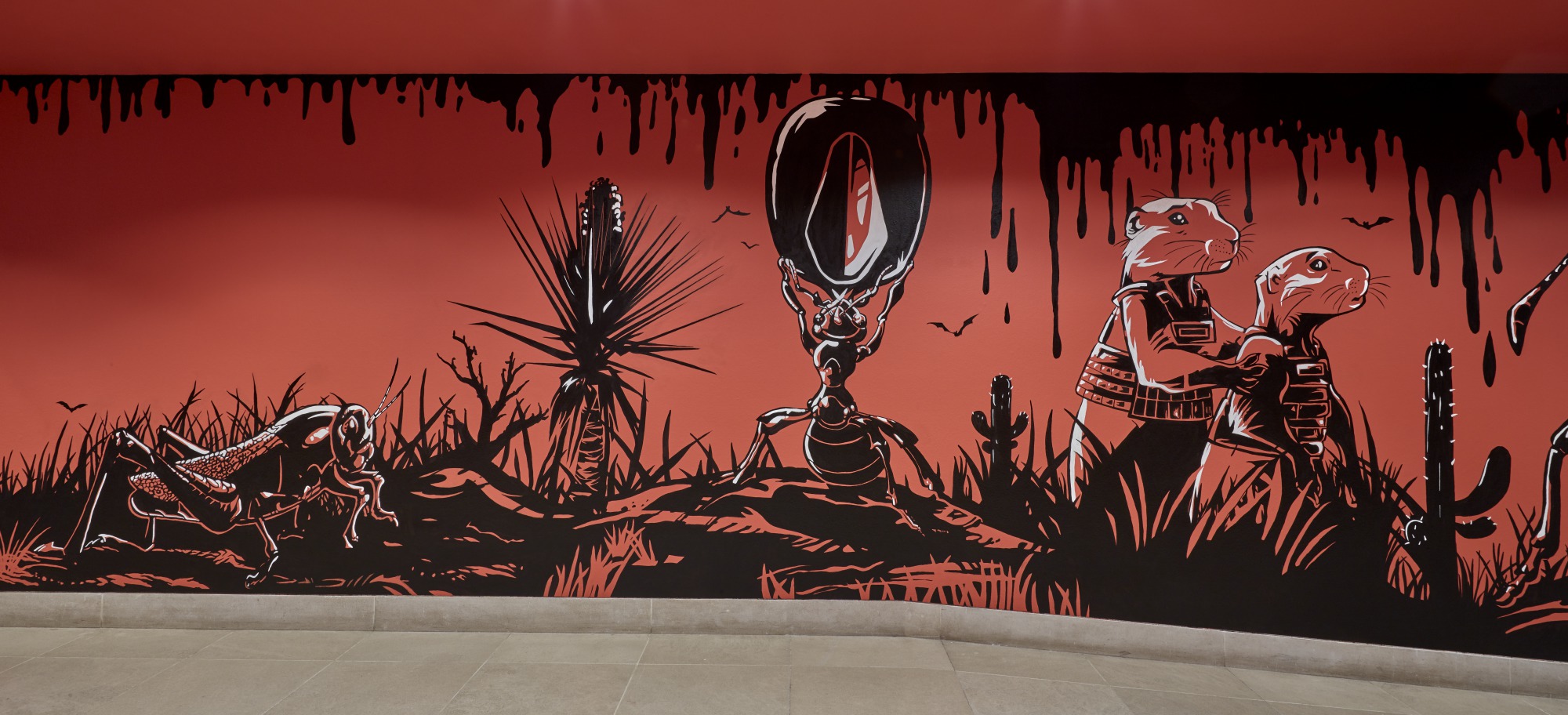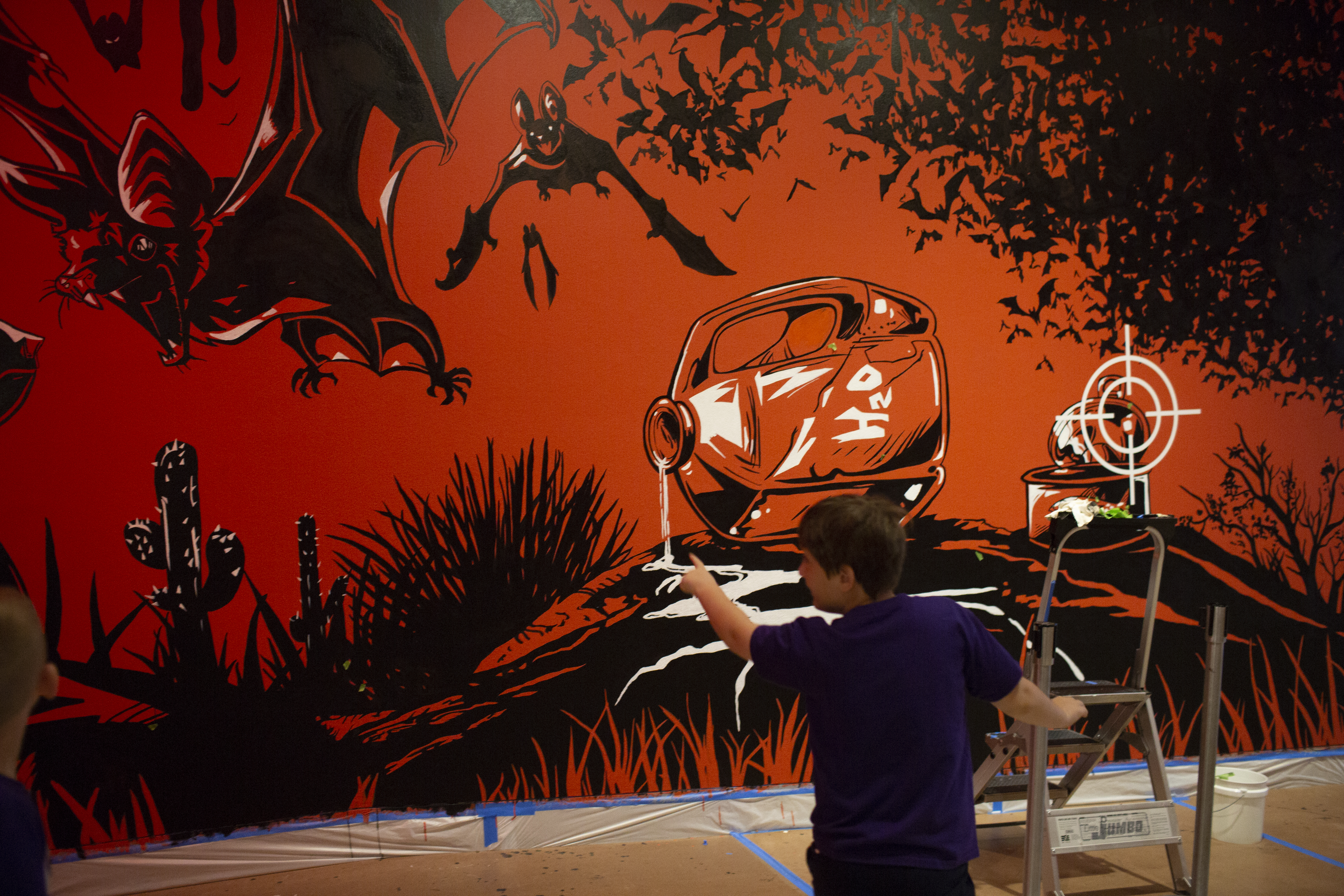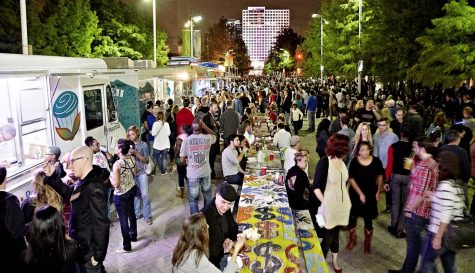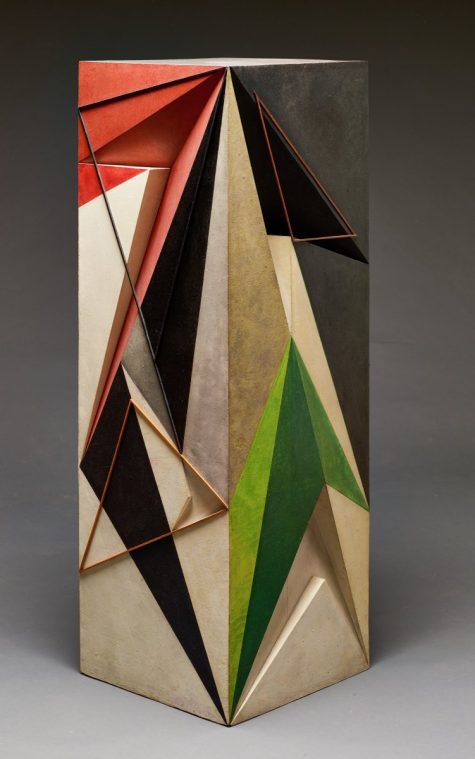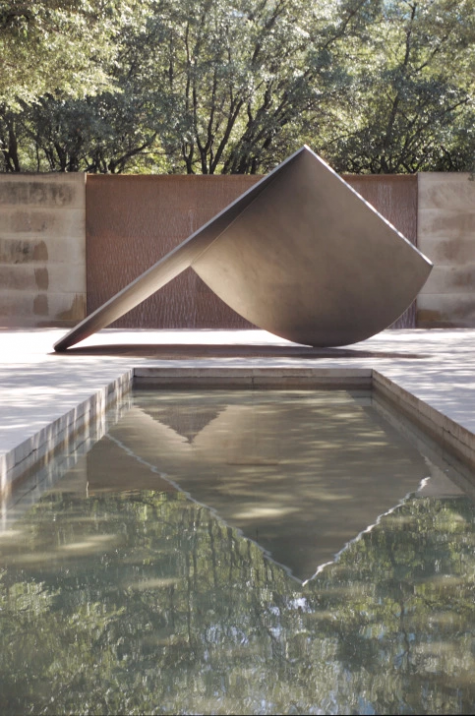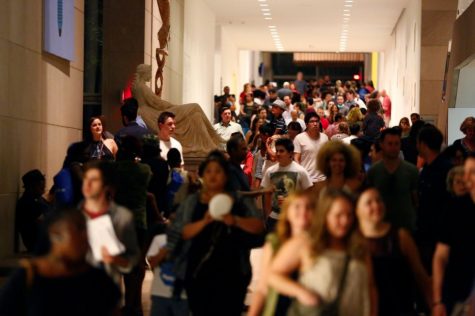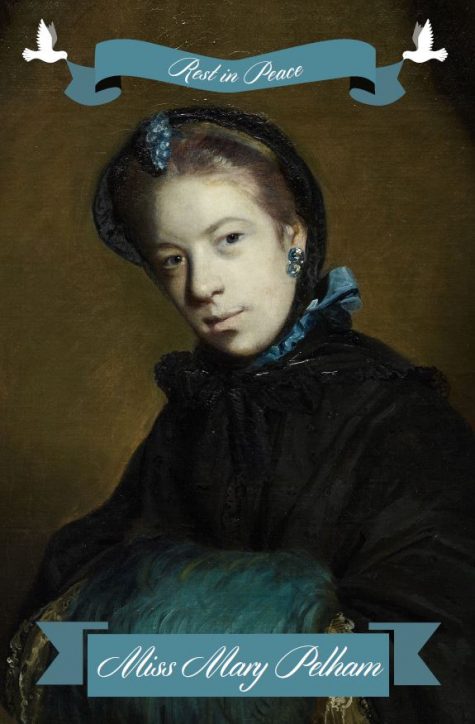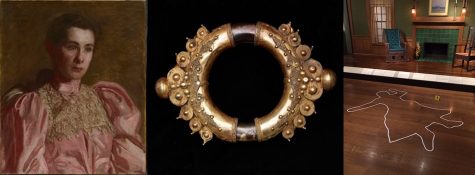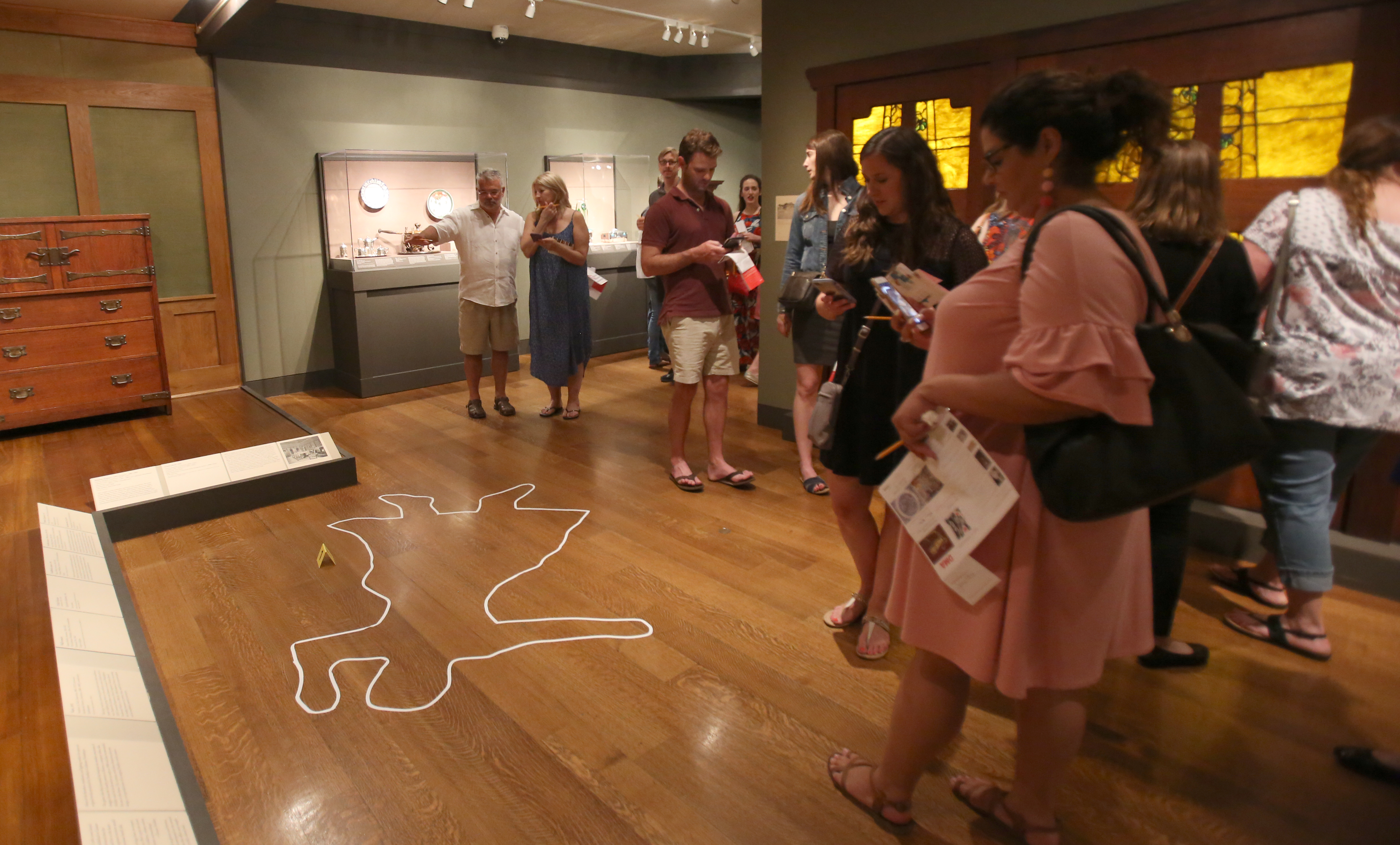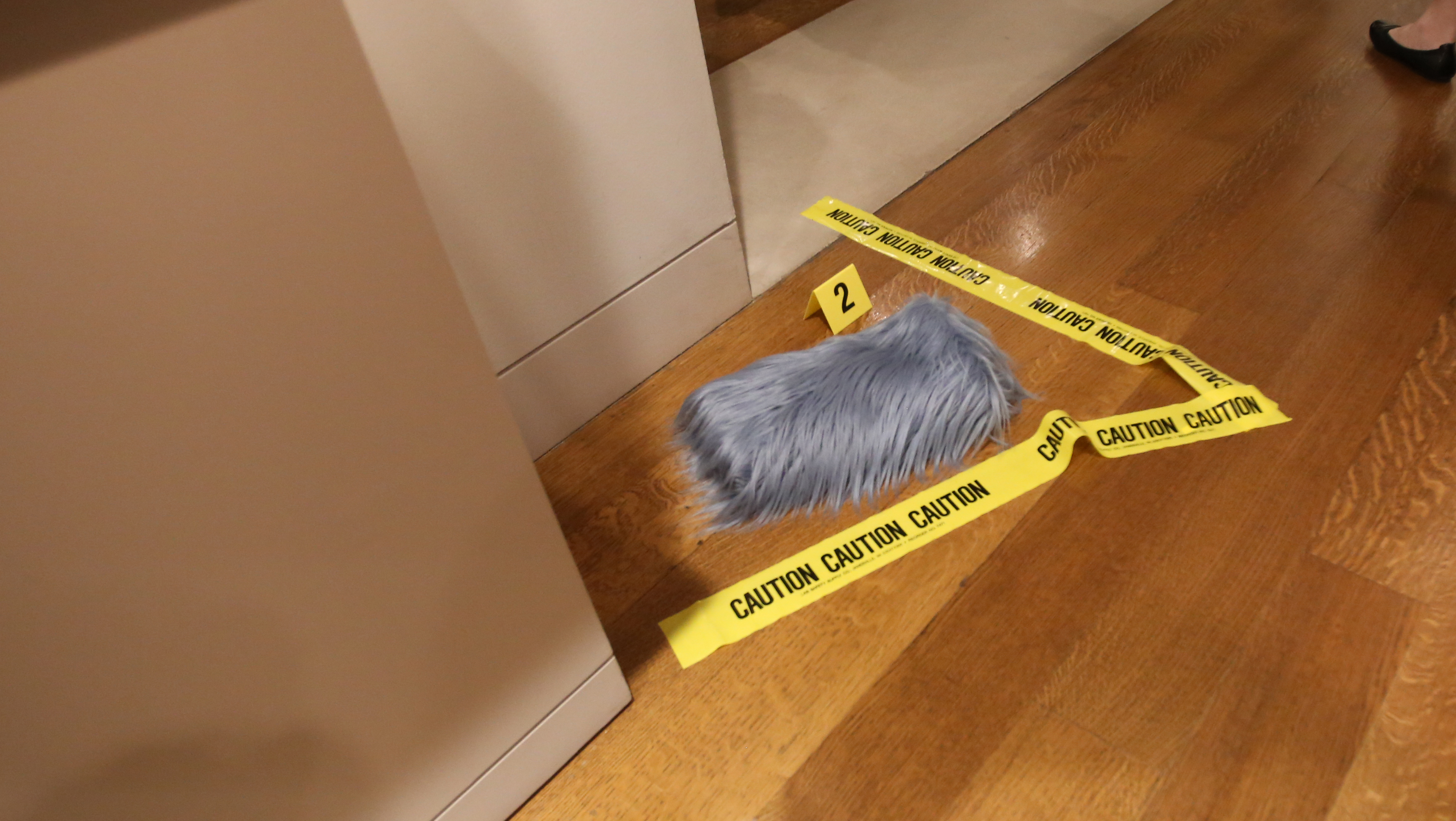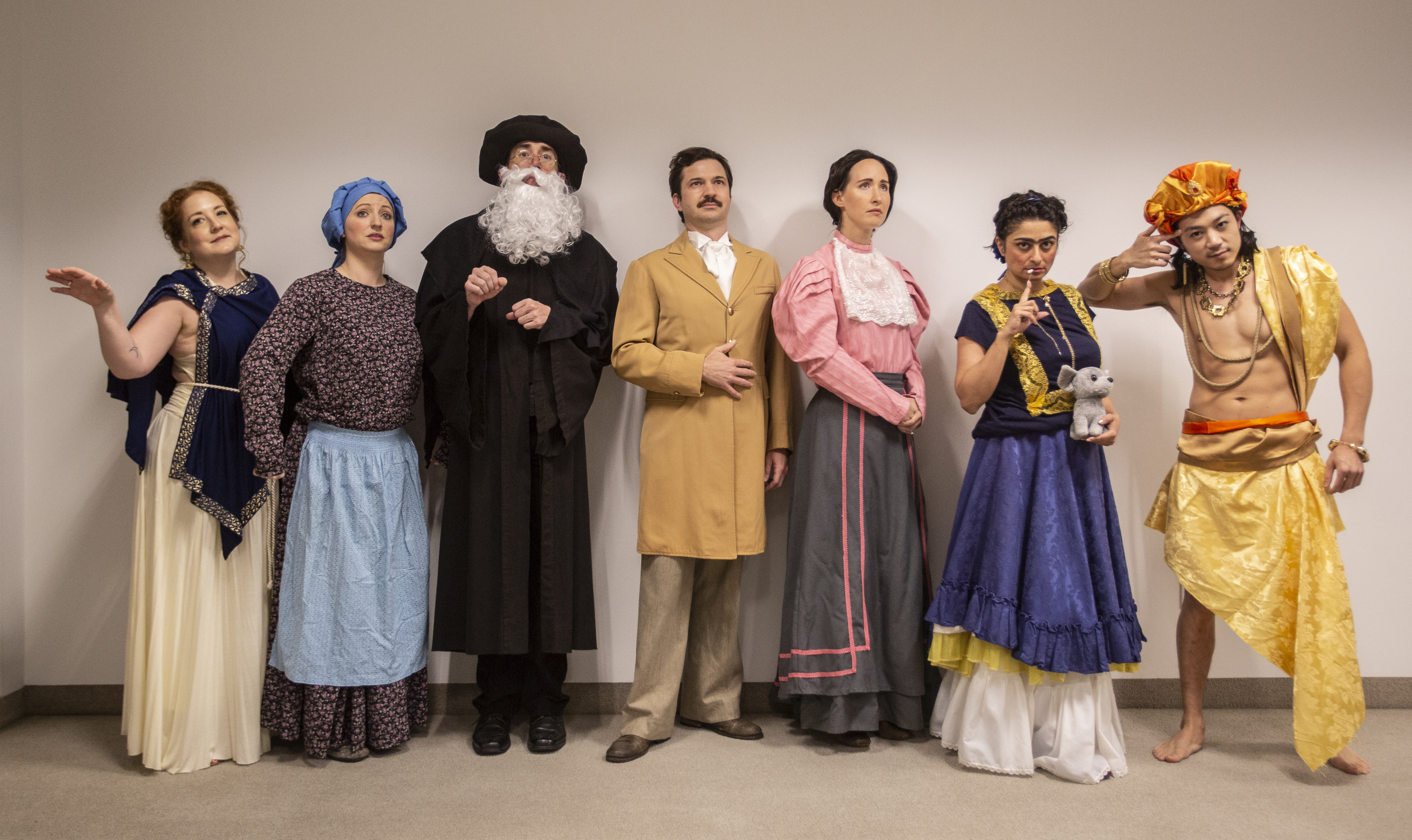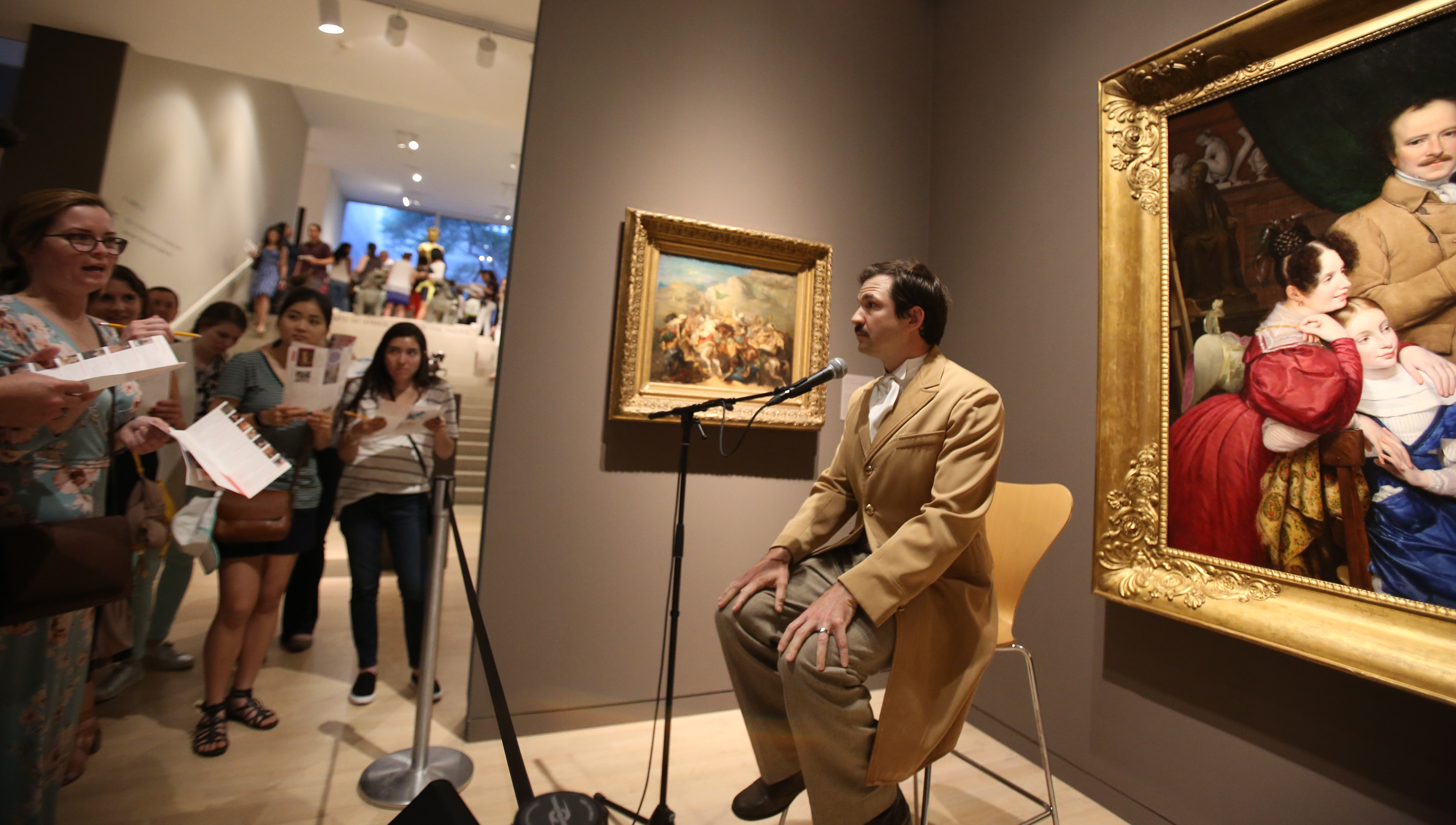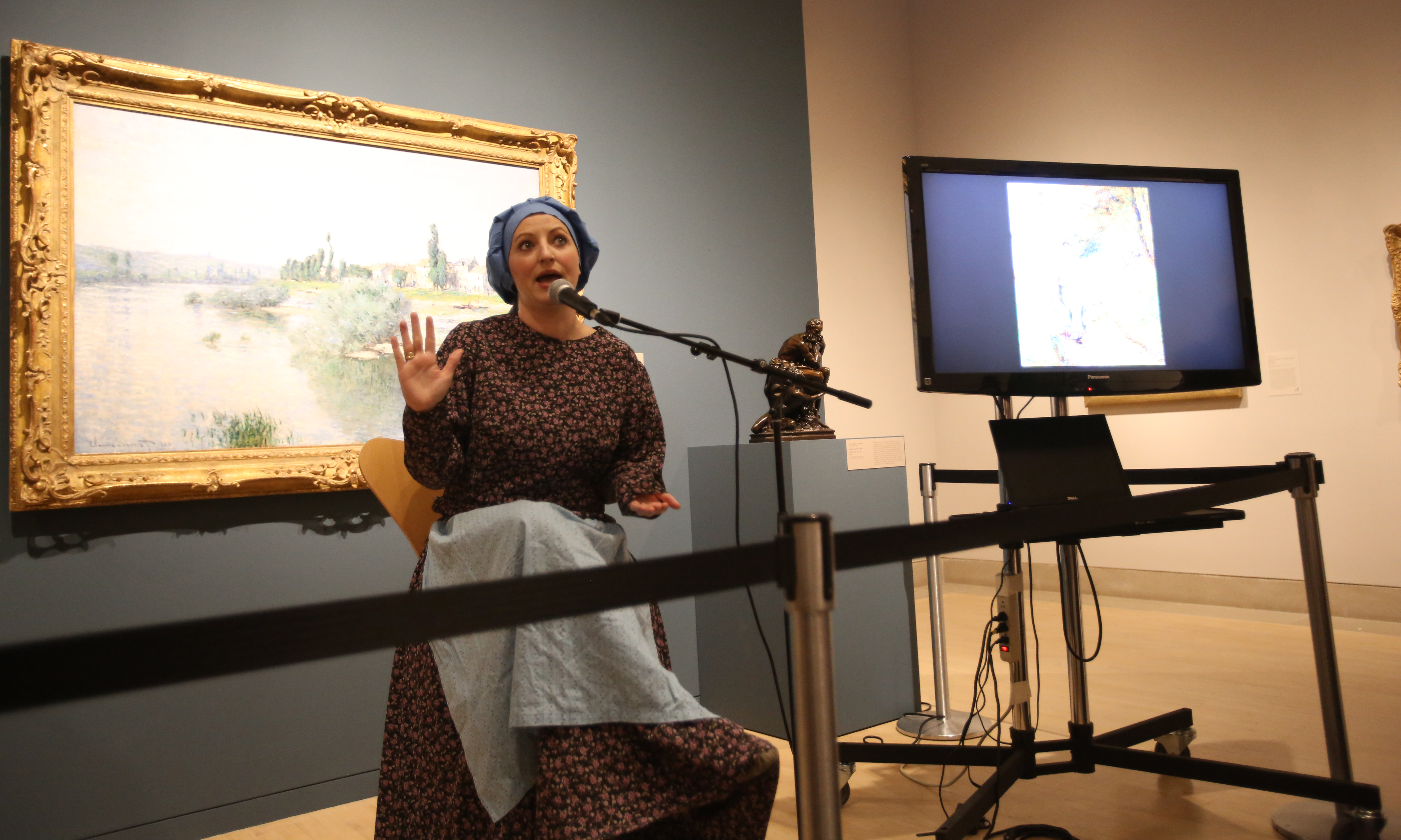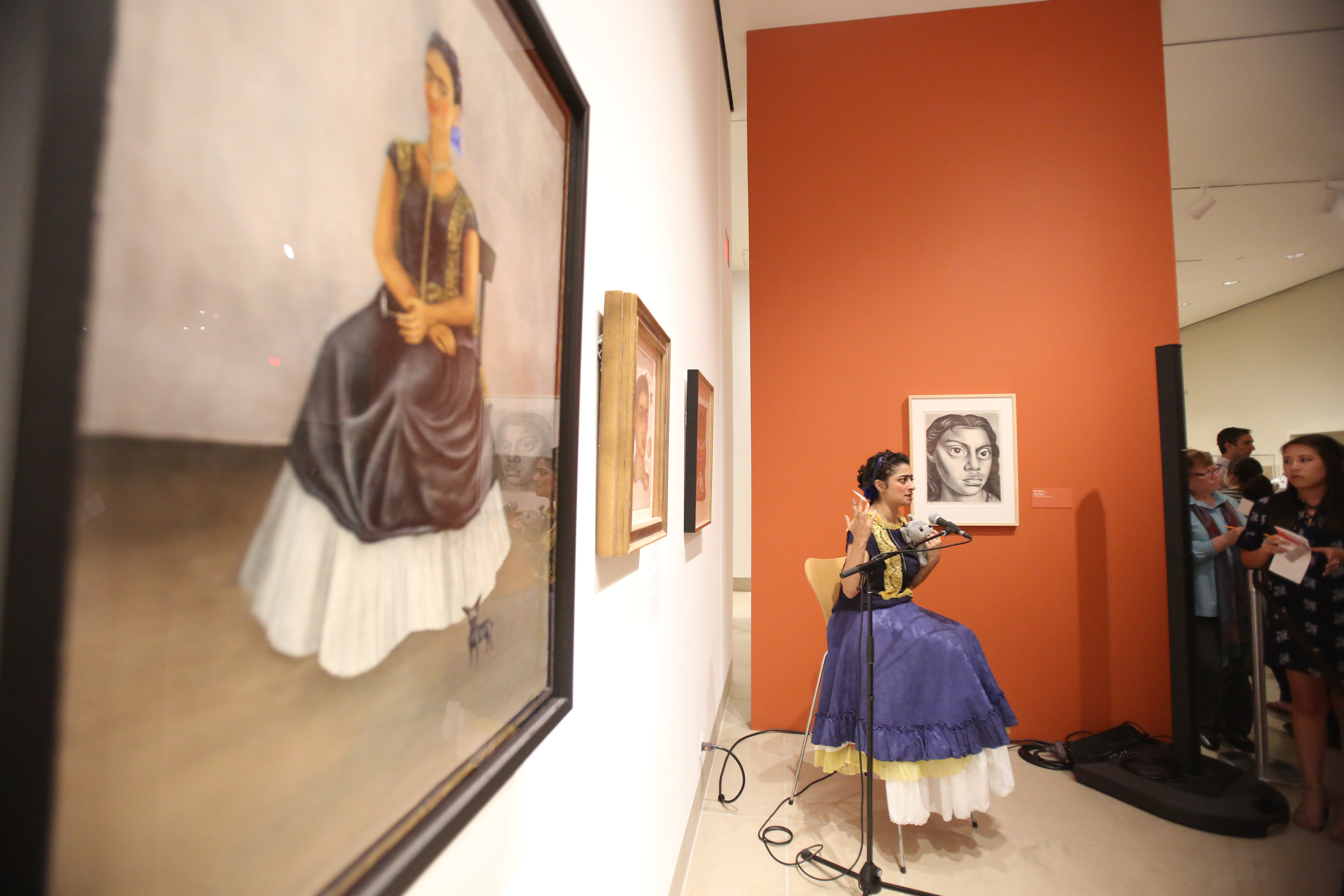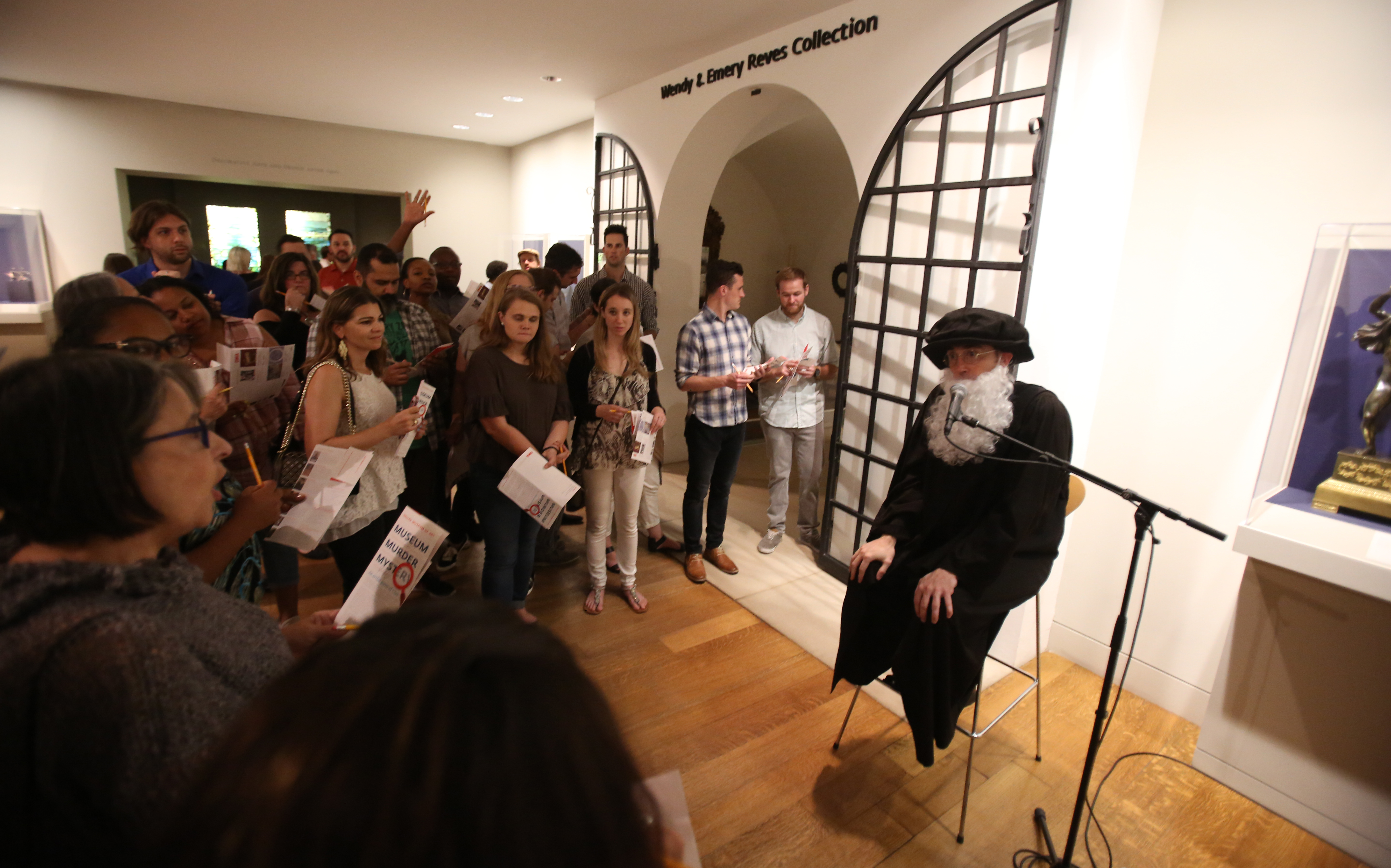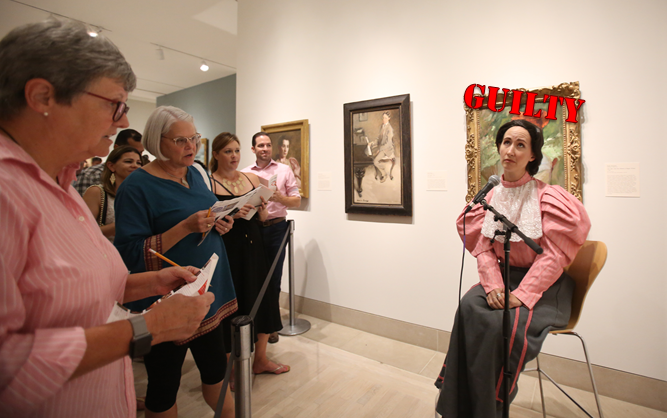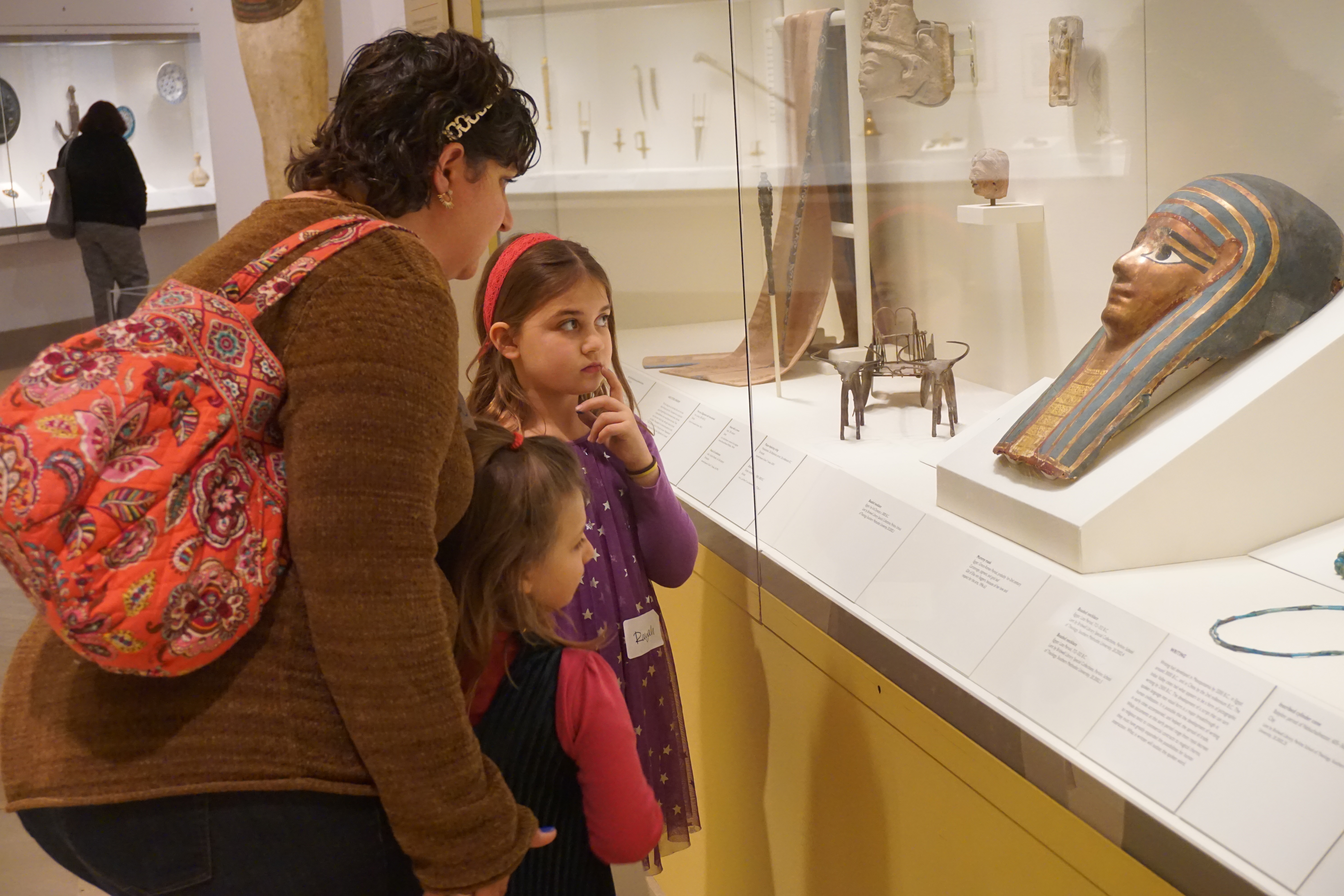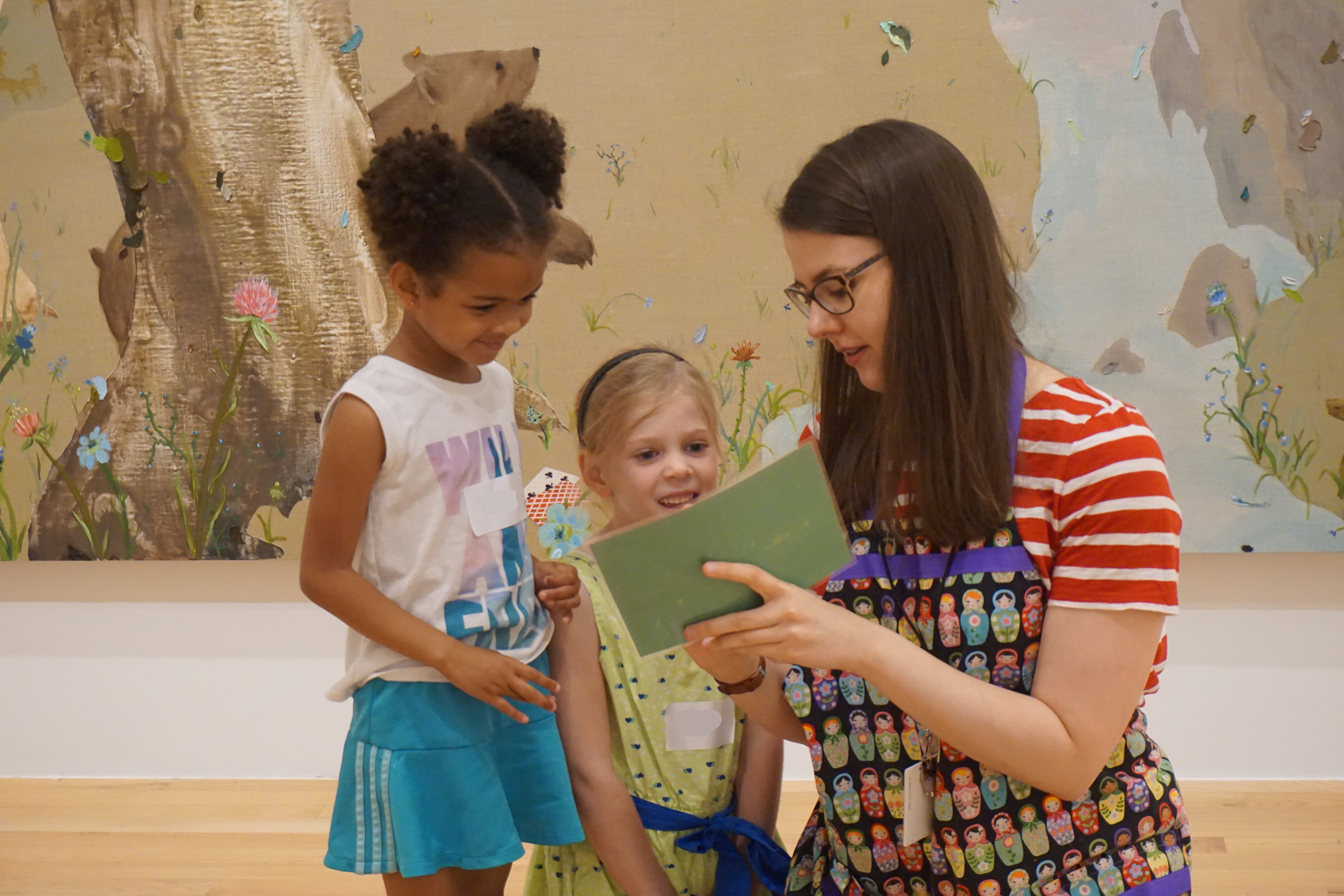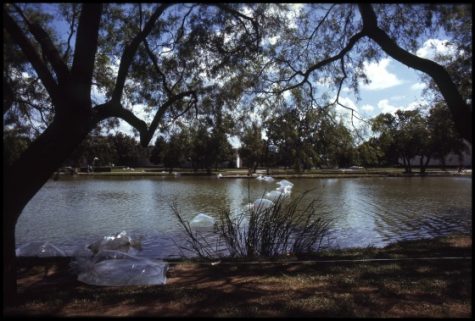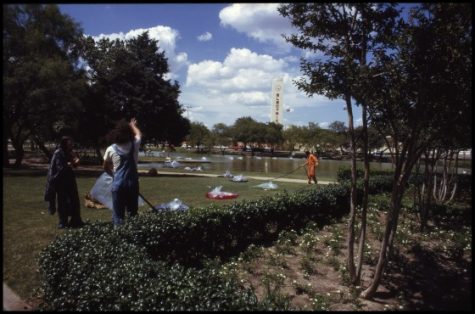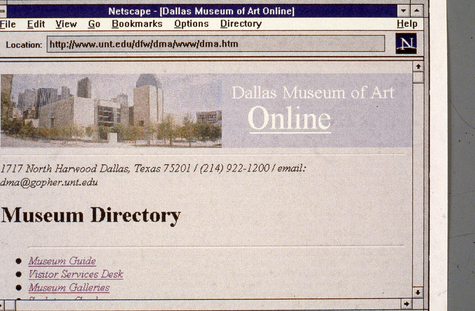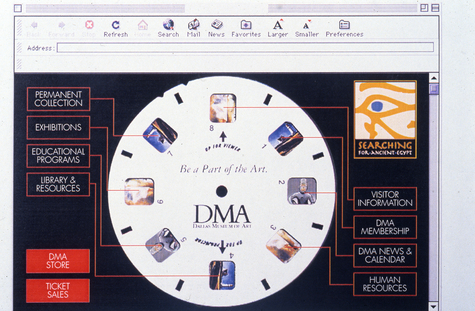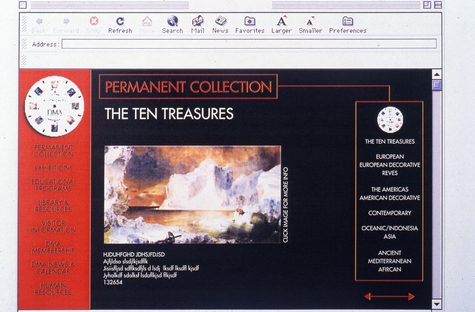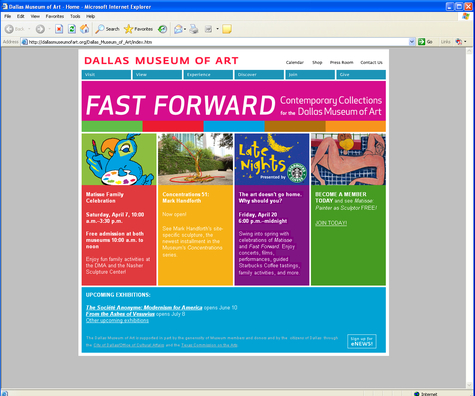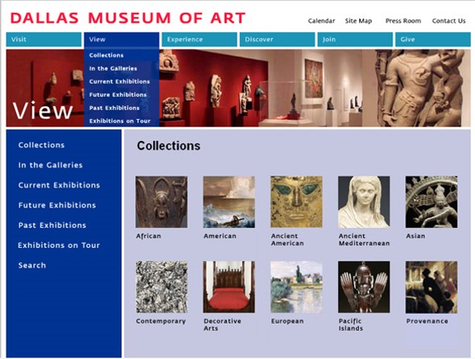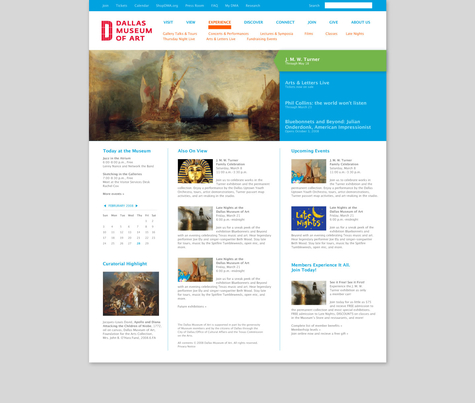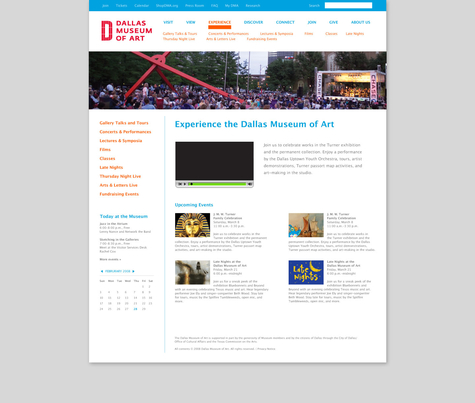Word & Image: Works on Paper from the 15th through 20 Centuries, on view in the DMA’s level 2 European Galleries, focuses on artists who blurred the boundaries between art and text, and uniquely explores this dynamic progression as it developed across Europe for over six centuries. Each of these works, selected from the DMA’s permanent collection, have a rich and diverse history. While many were originally intended as personal objects for private use, others were made for mass production on the open market or for a select group of art connoisseurs. Several of these pieces have not been on view for several years, if ever.
Here’s a close look at a few of the objects on display:

15th-Century German Artist, David and the Ark of the Covenant, page from the Cologne Bible, late 15th century, published in Cologne, Germany, printed by Heinrich Quentell and Bartholomäus von Unckel, hand-colored woodcut on paper, Gift of the Dallas Print Society. 1937.18
What is this page from?
This page was removed from a copy of the Cologne Bible, printed in Germany. The Cologne Bible was one of the most ground-breaking evolutions in book design. We take for granted today that a book may be produced with as many pictures as a writer or publisher desires, scattered however and wherever across the page. In this period, only the upper-class could afford elaborately designed manuscripts. Even these opulent books followed a traditional standard of production with images set either above or below the text, or separated completely on another page. The Cologne Bible shocked viewers with over 100 images that break directly through the text.
How was it made?
Johannes Gutenberg’s printing press lead book production out of the Middle Ages and into the Early Modern era. This page was assembled using individually cast letters and symbols covered with an oil based ink. Its woodcut illustration was created using a relief printing technique, in which a woodblock is carved with a chisel or gouge and inked with a roller. The sunken, cut-away areas received no ink and appeared white in the print. Color was added after the page dried. This addition of pigment also signals the wealth of the patron.

William Hogarth, The Five Orders of the Periwigs, 1761, etching on paper, Dallas Museum of Art, Foundation for the Arts Collection, gift of Mrs. Alfred L. Bromberg, 1984.194.FA
What inspired this work?
In 1748, the antiquarians James Stuart and Nicholas Revett announced that their important work The Antiquities of Athen Measured and Delineated was soon to be published. However, the first volume only made it to press in 1762, with the second appearing around 1789 or 1790. Nearly 40 years after their announcement! Here, Hogarth plays on the annticipation of the long wait for their work, with the opening line “In about Seventeen Years, will be completed” at the bottom. This may have been more lighthearted than really biting, as James Stuart was claimed to keep a copy of the print on a fire screen in his parlor to show visitors.
Who are we looking at?
This complex etching is organized by row based on the five classical orders: Doric, Tuscan, Iconic, Composite, and Corinthian. He arranges the wigs like a display in a shop window with each line corresponding to the five social classes who wore them. Notice at the bottom, there is a sixth additionial order for aristocratic women. The characters wearing the wigs were recognizable individuals, including William Warburton at the very top left turned in profile, Bubb Doginton below him, and the Queen Charlotte and Countess of Northumberland on the bottom line.

Olga Vladimirovna Rozanova, Authors: Alexei Kruchenykh, Velimir Khlebnikov, text and Illustration from A Game in Hell, 1914, Second Edition, published in St. Petersburg, Printed by Svet, Nevski Prospect, 136, lithograph on paper, Dallas Museum of Art, The Art Museum League Fund in honor of Mr. and Mrs. James H. Clark. 1978.75.4
What is it?
This second edition of the Futurist book A Game in Hell is quite different from the first in binding technique, lettering type, illustration, and its further additional 292 verses. A Game in Hell is an extended poem about a card game going on between devils and sinners in hell. Artists Olga Rozanova and Kazmir Malevich collaborated with writers Alexei Kruchenykh and Velimir Khlebnikov to create a completely new work filled with more lively devils and sinister characters. While Malevich did three drawings and the cover, Rozanova dominates the character of the book with over twenty compositions and marginal figures.
What influenced this piece?
During the early 20th century, there was a dominant Russian peasant population, influencing Futurist interests in handmade books and folk-like imagery. The poetics of play and chance manifested in the aesthetics of early Russian avant-garde as a rebellious method of making art without rules. Futurist books were the perfect marriage of physical object and literary expression, which created a true merging of art and word.
Beth CreMeens is the Dedo and Barron Kidd McDermott Graduate Intern for European Art at the DMA

